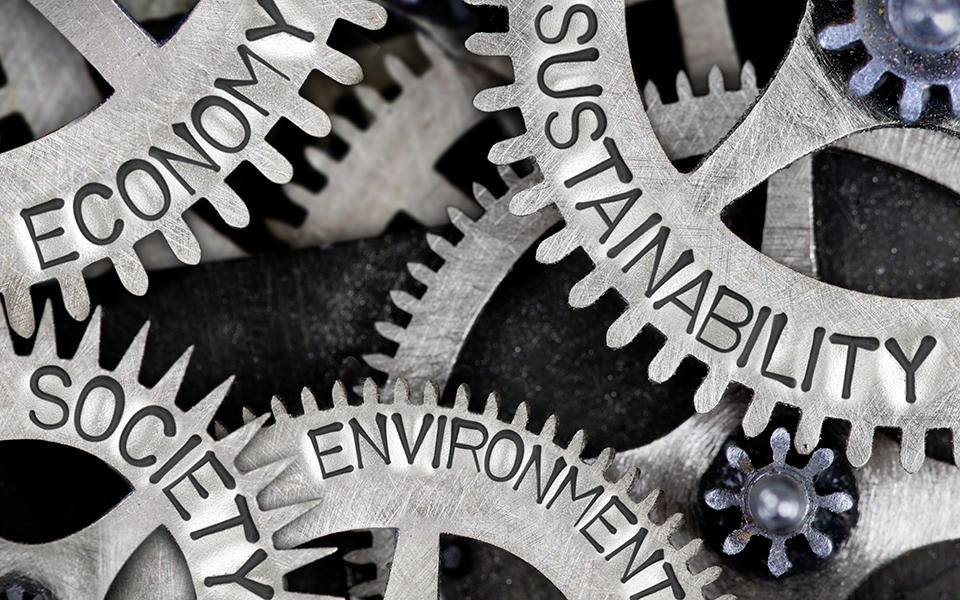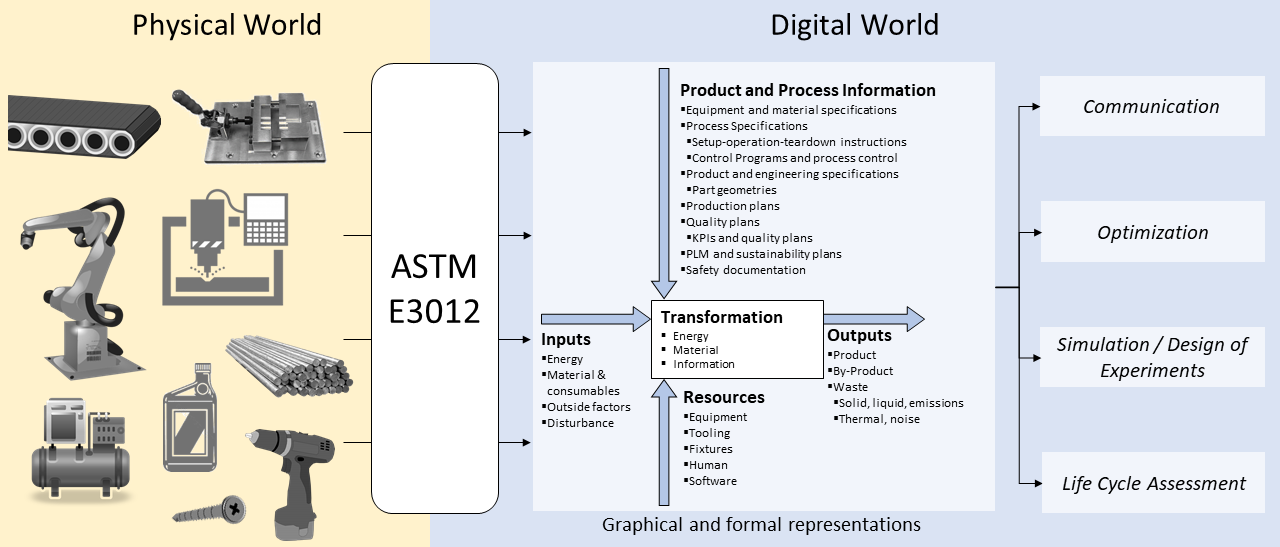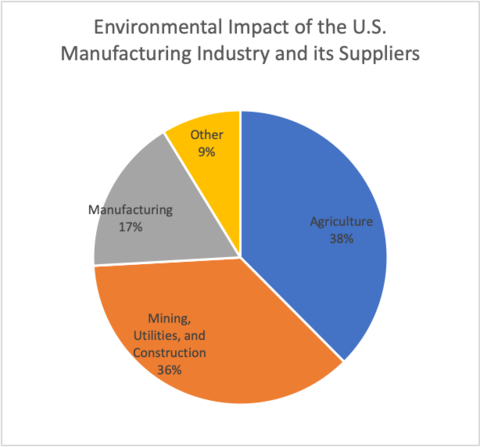Taking Measure
Just a Standard Blog

The COVID pandemic has highlighted the role that manufacturing plays in our society. Manufacturing is important not only for improving our quality of life but also for the necessities of life, from food to toilet paper to transportation and safe and secure housing. As our society has evolved, we have learned better ways to manufacture and are able to create an amazing variety of products. But providing these goods is not without side effects to the environment, and care is needed to manage the impacts of our production systems.
According to the Organization for Economic Cooperation and Development (OECD), sustainable manufacturing refers to the ability to manage manufacturing operations “in an environmentally and socially responsible manner.” Standards and programs of various kinds have formed around this idea, but many only scratch the surface of what could be accomplished if we had better measurement science to really evaluate the trade-offs that manufacturers must make every day to be sustainable.
Let there be no doubt that when care is not taken manufacturing will make a mess. The response has often been regulations to require more consideration of the environment. That’s the “stick” approach to sustainable manufacturing.
It turns out that a “carrot” also exists — sustainability leads to greater resource efficiency and resulting cost savings. In addition, social pressures to show good stewardship are mounting in the form of customer demand and investor interest. These pressures have long been difficult for manufacturers to respond to in a meaningful, data-driven way, especially for the small and medium-size manufacturers who have little control over the products that they produce since they are often not engaged in the design of those products.
No one-size-fits-all solution can exist for improving sustainable manufacturing performance. Each manufacturing enterprise is unique. Even large manufacturers with multiple facilities producing the same products struggle to share performance lessons between factories. Each situation needs to be uniquely addressed based on the corporate knowledge of the manufacturer.
Several early standards efforts focused on a management perspective to help address how to best manage manufacturing facilities and other resources, but these fall short of addressing manufacturing’s core function — that of transforming raw materials into new products.
My colleagues and I knew that manufacturers needed a systematic way to dig deep into their operations to find their own environmental savings opportunities. From June 2015 to March 2016, we held a series of industry roundtables and reviewed the published literature to better understand how manufacturing processes are being measured today and the needs for improvements. One thing was clear: Standards in this area were virtually nonexistent. Our goal as National Institute of Standards and Technology (NIST) researchers is to develop the measurement science to help manufacturers improve on their core function, which is accomplished with manufacturing processes.
The term “manufacturing process” is itself an abstraction that refers to many, many different types of processes, and each of those processes is unique. Our challenge was to create standard methods that could apply to all those processes in a useful way. We wanted the standards to be compatible with emerging technology to integrate the models seamlessly with the burgeoning array of communications, AI and other tools that are the future of manufacturing — so-called smart manufacturing.
The approach we took was to define standards for applying information technology to the description, or characterization, of manufacturing processes. By providing standard methods for characterizing manufacturing processes, we enable those descriptions to be used in an automated way so that they can be reused for a variety of purposes. The building block for all the uses is a standard form for what we call a unit manufacturing process model (UMP).
Moving beyond blueprints
The unit manufacturing process model (UMP) is to a manufacturing process what a blueprint has been for a product or building design. Blueprints, so called for the backing of blue ink originally used on each page, were first introduced in the 1840s to copy a technical drawing exactly so that the information could be more widely shared. Over the years more and more standards were developed to precisely represent all kinds of technical drawings of engineered products.
Jump forward to the digital age. Now, we can collect so much more data on a design than standard blueprints can capture. In the product design world, computer-aided design, or CAD, systems are used to produce these drawings as three-dimensional models. Standards for representing these models provide an information-rich backbone to which the 3D models are “attached” in the virtual sense of the word. For example, the standard for product model data ISO 10303 (a.k.a. STEP) defines a complex array of information that can associate the digital 3D representations with various other perspectives on product information, such as lifecycle, used in other enterprise systems integrating data across an organization.

No such format for representing manufacturing processes has been available until now. Starting in 2013, we worked with standards development organization ASTM’s E60 committee on sustainability to form a subcommittee on sustainable manufacturing, E60.13, where we introduced the idea of a set of standards for modeling manufacturing processes — the UMP model. In 2020 the capstone of the initial set of standards was published as the Standard Guide for Characterizing Environmental Aspects of Manufacturing Processes, E3012. That effort was led by Bill Bernstein (NIST). This standard describes the UMP format. Built on state-of-the-art information technology, the UMP model has been designed from the start to integrate into a smart manufacturing enterprise. A UMP model can be used to capture institutional knowledge about a process so that it can be more easily shared. The new manufacturing process blueprints serve not only as a means of communication but also as digital models of the processes. They can be automated for evaluation of process performance or be used with other process models to evaluate streams of potential manufacturing workflows.
A UMP model provides a uniform and precise way for manufacturers to describe their processes, enabling:
- Reliable and archivable communications about a process.
- A means to establish performance baselines.
- A path forward for developing simulations of manufacturing process flows.
- Mechanisms for generating environmental impact assessments for manufacturing processes.
- Informed decisions in analyzing trade-offs between competing goals, such as manufacturing speed and use of resources such as energy and materials.
Sustainability: A balancing act

While not all these things are possible now, the standards are a strong starting point for this work. With these basic measurement tools in place, manufacturers and researchers can reach for and experiment with greater and greater capabilities that will give them better control over manufacturing processes and allow them to make more informed choices about trade-offs. With the standards activities now underway in ASTM, a path for expanding on those standards to provide more capabilities and precision in definitions is available.
The initial building block for the UMP model, the Standard Guide for Characterizing Environmental Aspects of Manufacturing Processes, does not exist in a vacuum. The knowledge captured in the models must be drawn from multiple sources, starting with subject matter experts and integrating with principled engineering design and analysis applications. A single UMP model encapsulates the complexity of a manufacturing process through a computational representation. Similarly, it may include a data-driven discovery effort, that is, an empirical study of the process. Two aspects critical to a well-developed UMP representation — process improvement planning and key performance indicators — are also documented in ASTM standards:
- Establishing a Process Improvement Project: The Standard Guide for Evaluation of Environmental Aspects of Sustainability of Manufacturing Processes, ASTM standard 2986, walks a manufacturer through establishing a performance improvement effort, including goal setting, process identification and formulating an improvement plan using the state-of-the art plan-do-check-act approach. The project was led by Paul Witherell (NIST).
- Selecting Key Performance Indicators: Sustainable manufacturing is the act of balancing objectives: Reducing environmental impacts needs to be considered along with a business’s operational capabilities and economic and performance goals. The Standard Guide on Definition, Selection, and Organization of Key Performance Indicators for Environmental Aspects of Manufacturing Processes, ASTM standard E3096, provides guidance for how to pool the collective wisdom of an organization and decide on the right things to measure and improve on. The standard instructs manufacturers in developing unique metrics by leaning on a diversity of viewpoints to identify realistic measures for a given process improvement project. These metrics are associated with the UMP model of the process. This effort was led by Shaw Feng (NIST) with support from Michael Brundage (NIST).
Combined, these three standards support a continuous improvement process for manufacturing systems and provide standard forms for storing a manufacturer’s institutional knowledge.
Certainly, other facets of sustainable manufacturing are important for manufacturers. So far, our ASTM sustainable manufacturing subcommittee has developed two other standards to address different aspects of sustainable manufacturing, and research is underway on others. The two areas where standards have already been initiated relate to incorporating manufacturing sustainability considerations into economic analysis, led by Doug Thomas (NIST), and provide more process definitions for describing manufacturing materials for use in life-cycle analysis.
I am very proud to have led this team of talented researchers in creating this initial set of standards and laying the groundwork for the future of sustainable manufacturing. It was no small undertaking. In addition to those trailblazers listed above, we would also like to acknowledge our colleagues who helped in the efforts including Sudarsan Rachuri, now at the Department of Energy, Kevin Lyons and Swee Leong, now retired from NIST, former NIST research associates Mahesh Mani, David Lechevalier, and Deogratias Kibira, and the team at Oregon State University working under the supervision of Karl Haapala, George Mason University under Alex Brodsky, and Old Dominion University under Barry Ezell.
We are interested in learning from others what new standards are needed and invite further contributions!
About the author
Related Posts
Comments
Dr. Veluri, You raise an important point. Many of the large OEMs have sustainability initiatives and are working to understand how to engage their supply chains in what we are calling the "sustainability journey." One piece of work that we have found useful for providing guidance for supply chains to help focus their efforts is that of SASB (the Sustainability Accounting Standards Board.) SASB sets priorities for 77 different industries. The ASTM work should help the manufacturers to dig into their processes to look for improvement opportunities, once they understand their own sustainability objectives. For the smaller manufacturers that will include establishing the goals most appropriate for their stakeholders, whether those are their communities, customers, and larger societal goals.
Hello KC,
Great read and great work from NIST!! I am also a subscriber to the idea that Tech can really help us with this challenge, and that there is much to be learned from IT that can be transferred to sustainability issues as you have so rightly highlighted in this article. Smart Manufacturing certainly can be Sustainable Manufacturing.
For example, Optimisation and Efficiency are also key cornerstones of ITIL, and additionally should be key parts of any sustainable approach, as due to their very nature this should lead to no/minimal waste. This in turn should lead to an increase profitability too, all the while becoming more attractive to investors.
However, this topic you raised is in itself an issue, as many people become confused or solely environmentally focussed when talking about sustainability, and often don't realise some of the processes and policies they already have in place that are related to this issue. Most organisations already act sustainably in some way, they are just not necessarily aware it can be labelled as such.
To put it simply, and the concept I like to share most, is that Sustainability is all about viewing this as Spaceship Earth. Everything we do is connected. We are aboard this "ship", with finite resources, as we journey through space.
This view allows for a much broader thinking as to what sustainability involves, as it needs to encompass thought on a wide range of topics.
Or to put it another way, imagine we are on a 3 year trip to Mars on a spaceship, we have 3 years of Oxygen, 3 years of food, 3 years of fuel, 3 years of Water, limited staff - if this crew did not live sustainably enough, they would not reach their destination. Smart use of their resources, aided by Tech, would certainly be a good place to start.






It is a very good insightful read. It is one of its kind bringing manufacturing to another level as mentioned smart manufacturing.
Sustainability as of today is not properly understood by the manufacturing industry it just not starts under one roof it starts way beyond in the upstream that needs to be considered otherwise the entire theme of sustainability will be mislead. As of today there is a huge gap between the upstream and downstream industries within the manufacturing industry. This gap is a cause of many impacts of this gap is closed by redefining the vertical integration within the framework of sustainability then we can see much more better results.